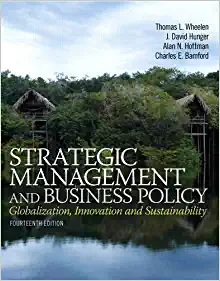

Please help!
1. Suppose that a researcher collects basic data on salaries and "qualifications" of restaurant chefs in Austin. The table below shows the sample average values of four different variables for which data were collected, separately for male chefs and female chefs. The three variables besides salary are "indicator variables" that take the value 1 if the answer is "Yes" and 0 if the answer is "No". For these variables, the sample averages therefore measure the fraction of chefs for whom the answer to the corresponding question is "Yes" Variable Male Average Female Average Annual salary (in $) 54,000 50,000 Has culinary school degree 0.25 0.20 Works in "fine dining" restaurant 0.30 0.25 Is restaurant's executive chef 0.30 0.10 a. What is value of the raw gender wage gap, in dollars, among chefs in Austin restaurants? Suppose that the researcher estimates separate OLS regressions by gender explaining annual chef salary as a function of (i) having a culinary school degree (or not) and (ii) working in a "fine dining" restaurant (or not). The estimation results are as follows: Males: Annual Salary = 50,000 + 10,000 . Culinary Degree + 5,000 . Fine Dining Females: Annual Salary = 46,900 + 9,500 . Culinary Degree + 4,800 . Fine Dining b. Perform the Blinder-Oaxaca decomposition using the rewards for "qualifications" of male chefs to find the portion of the raw gender salary gap that can be explained by the gender gap in average chef "qualifications" (i.e., having a culinary school degree and working in a "fine dining" restaurant). c. Perform the Blinder-Oaxaca decomposition using the rewards for "qualifications" of female chefs to find the portion of the raw gender salary gap that can be explained by the gender gap in average chef "qualifications" (i.e., having a culinary school degree and working in a "fine dining" restaurant). Do you get the same numerical answer as in (b)? d. Based on your answers to (b) and (c), is the gender gap in chef salary mostly due to the gender gap in chef "qualifications" or the gender gap in how chefs are rewarded for their qualifications? Now suppose that the researcher re-estimates the models with executive chef added to the list of explanatory variables. The new estimates look as follows: Males: Annual Salary = 47,800 + 8,000 . Culinary Degree + 4,000 . Fine Dining + 10,000 . Executive Chef Females: Annual Salary = 46,700 + 7,500 . Culinary Degree + 3,600 . Fine Dining + 9,000 . Executive Chefe. Perform the Blinder-Oaxaca decomposition using the rewards for "qualifications" of male chefs to find the portion of the raw gender salary gap that can be explained by the gender gap in average chef "qualifications" (i.e., having a culinary school degree, working in a "fine dining" restaurant, and being an executive chef). f. Perform the Blinder-Oaxaca decomposition using the rewards for "qualifications" of female chefs to find the portion of the raw gender salary gap that can be explained by the gender gap in average chef "qualifications" (i.e., having a culinary school degree, working in a "fine dining" restaurant, and being an executive chef). Do you get the same numerical answer as in (e)? g. Based on your answers to (e) and (f), is the gender gap in chef salary mostly due to the gender gap in chef "qualifications" or the gender gap in how chefs are rewarded for their qualifications? h. Based on the Blinder-Oaxaca decompositions in (e) and (f), a restaurant industry spokesperson argues that the gender gap in chef salary is primarily not the result of labor market discrimination against female chefs. Do you find this argument convincing? Why or why not? 2. Carefully read the New York Times article on the class Canvas site entitled "Women Did Everything Right, Then Work Got Greedy" so that you are prepared to answer questions on the content of the article










